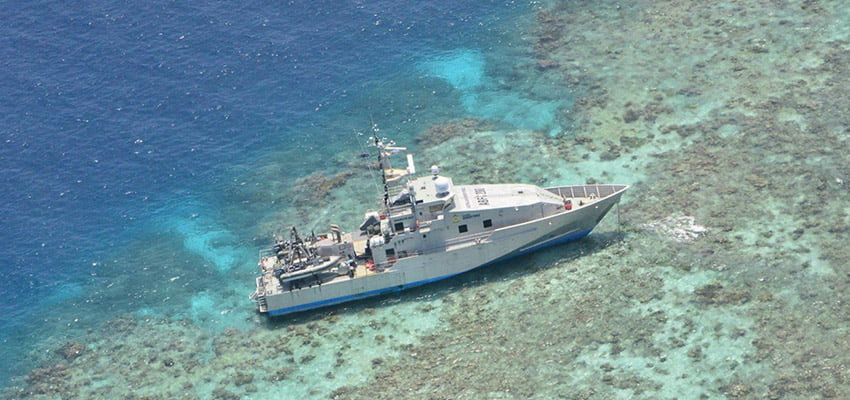UNDERLYING issues with electronic chart display information systems have been revealed in an investigation into the grounding of Australian Border Force cutter Roebuck Bay almost two years ago.
The vessel grounded on Henry Reef just after midnight while on a night voyage from the Torres Strait to Lizard Island in September 2017.
The ship’s electronic chart display and information system identified the reef as a danger to the planned route, however, the crew did not identify the danger either visually or by using ECDIS.
There were no reported injuries or oil pollution, but the vessel sustained “substantial damage”.
The ATSB found the crew’s ability to check the amended route was limited, owing to ineffective training for the operational use of their on board ECDIS.
“ECDIS type-specific training needs to be designed, delivered and undertaken so operators have the required knowledge to confidently operate ECDIS as intended by the manufacturer,” ATSB chief commissioner Greg Hood said.
The ATSB also found the vessel’s ECDIS was not updated to the latest International Hydrographic Organization standards and lacked enhanced safety features.
The ATSB reminds regulators, manufacturers, hydrographic offices and others that their ultimate goal must be to eliminate the significant risks with the use of ECDIS or at least reduce them to an acceptable level.
“Like all on-board equipment, ECDIS needs to be maintained and compatible with the latest applicable standards,” Mr Hood said.
“With the recent introduction of ECDIS as the sole means of marine navigation and the replacement of paper charts, the grounding was an opportunity for the ATSB to explore any potential safety impact of ECDIS in a real-world operational environment.”
Mr Hood said the investigation had highlighted areas of concern.
“While this did not specifically contribute to the grounding of Roebuck Bay, the investigation has shown that the implementation of ECDIS has introduced some unintended risks to marine navigation,” he said.
Mr Hood said the ATSB recognised the ECDIS and electronic navigational charts were essential.
“By allowing operators to view and change an electronic navigational chart to a larger complication scale, ECDIS can make single point features representing rocks, wrecks and other obstructions appear progressively smaller as the scale is changed, creating the impression it is clear of a ship’s route or further away than what it actually is,” he said.
“The ATSB safety message from this investigation reminds regulators, manufacturers, hydrographic offices and other concerned parties that their ultimate goal must be to eliminate the significant risks with the use of ECDIS or at least reduce them to an acceptable level in terms of navigational safety.”

